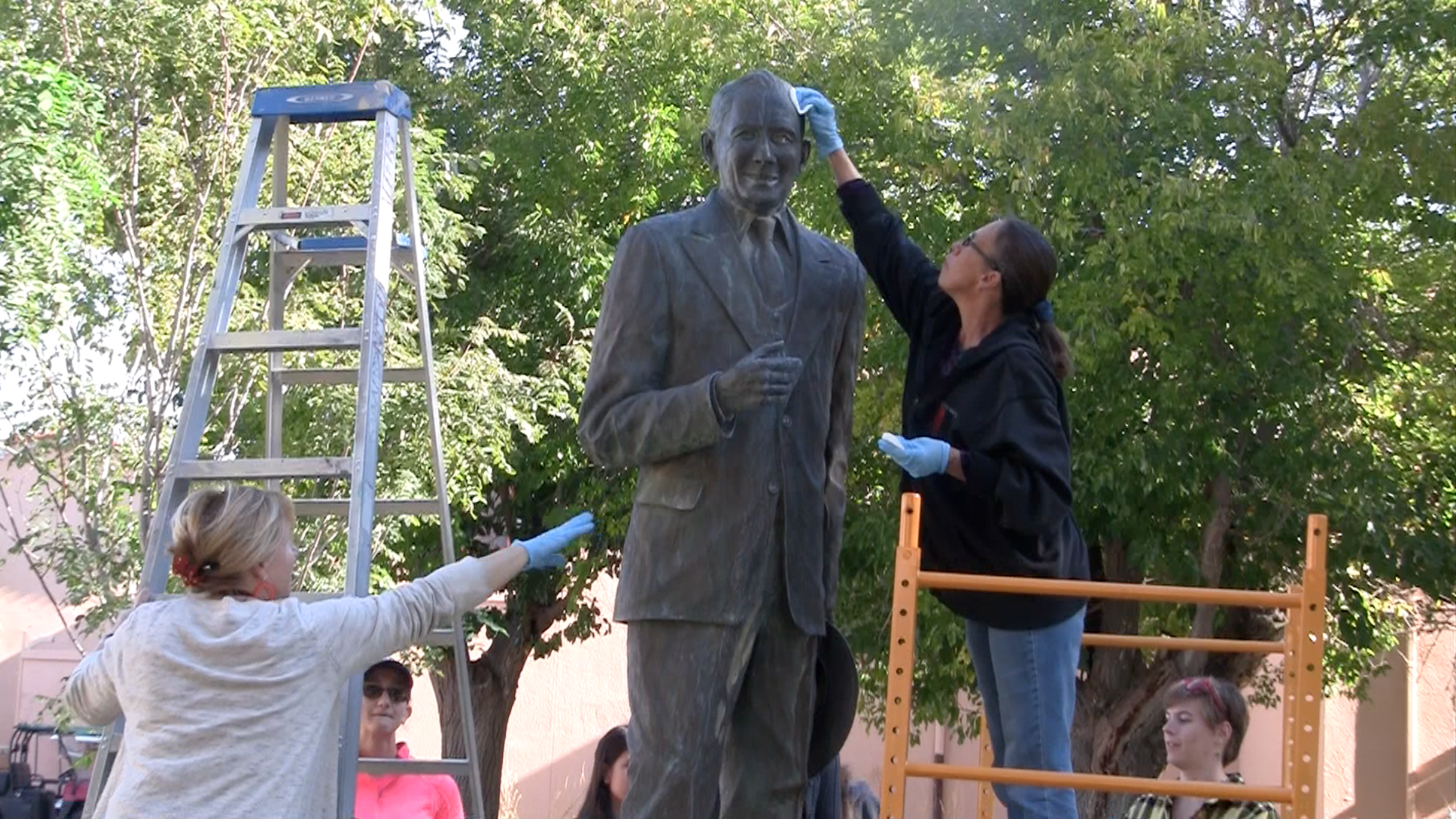A group of students in New Mexico State University’s Art Department recently restored a statue of former NMSU president Hugh Milton.
 |
| New Mexico State University art students restore statue on campus of former NMSU President Hugh Milton. (NMSU photo by Billy Huntsman) |
Led by Professor Silvia Marinas-Feliner, director of the Museum Conservation Program in the College of Arts and Sciences, the five students used a green chemical solution and cotton makeup pads to remove the corrosion off of the statue.
“The bad corrosion is a turquoise color and this solution will eventually remove it,” Marinas-Feliner said.
After applying the solution, which is similar to the acidity of a lemon, Marinas-Feliner rinsed off the solution with a water hose, then the students covered the statue with a protective layer of microcrystalline wax.
“It’s what we call a sacrificial layer,” Marinas-Feliner said. “And this sacrificial layer is the one that will deteriorate instead of the metal itself.”
Because of changes in temperature throughout the year, any metal piece of art outdoors is susceptible to corrosion. To prevent corrosion, special solutions and techniques must be used.
“There’s also a layer called the patina on the statue,” Marinas-Feliner said. “It’s a gray-brown color and that’s good corrosion, like skin on your hand. So we don’t want to scrub away that corrosion.”
How to clean and prevent deterioration of statues like Milton are part of what Marinas-Feliner teaches her students, both undergrads and graduates, in the Museum Conservation Program. NMSU’s program is one of only three nationwide that prepares students for graduate work to become art conservators.
“I teach people how to become conservators for a museum or a private collection,” Marinas-Feliner said.
Pieces of art such as old books, statues, sculptures, paintings, ceramics, and archeological and anthropological findings all need to be conserved to prevent deterioration, Marinas-Feliner said.
“You can’t just store these things in a room and expect them to be O.K.,” she said.
Museum conservation is equal parts art and science, Marinas-Feliner said.
“On the one hand, you can create art and restore parts that may have deteriorated beyond repair,” she said. “But you also have to understand chemistry and how materials and chemicals interact with each other.”
Marinas-Feliner said students in the Museum Conservation Program sometimes go into conservation-science graduate-school programs, which study the chemical interactions of new materials that may be used in art conservation and teaches museum conservators how to preserve and restore these materials.
Other students may not pursue a career in museum conservation but knowledge of materials’ interactions can benefit anyone, particularly artists who want their works to last.
“Some artists don’t want their works to be permanent,” Marinas-Feliner said. “But for those who do, they should have a basic understanding of what materials they can use that will last longer and in better condition.”
This was the first time students in the Museum Conservation Program have restored the Milton statue. Students in the program previously restored the Traders statue, located in the courtyard of the Business Complex, three years in a row, as well as the Joy of Learning statue, located in between Young Hall and the Branson Library, two years in a row.
“We also restore the Bataan Death March Memorial statue every year before the march, so it’s ready and beautiful,” Marinas-Feliner said.
